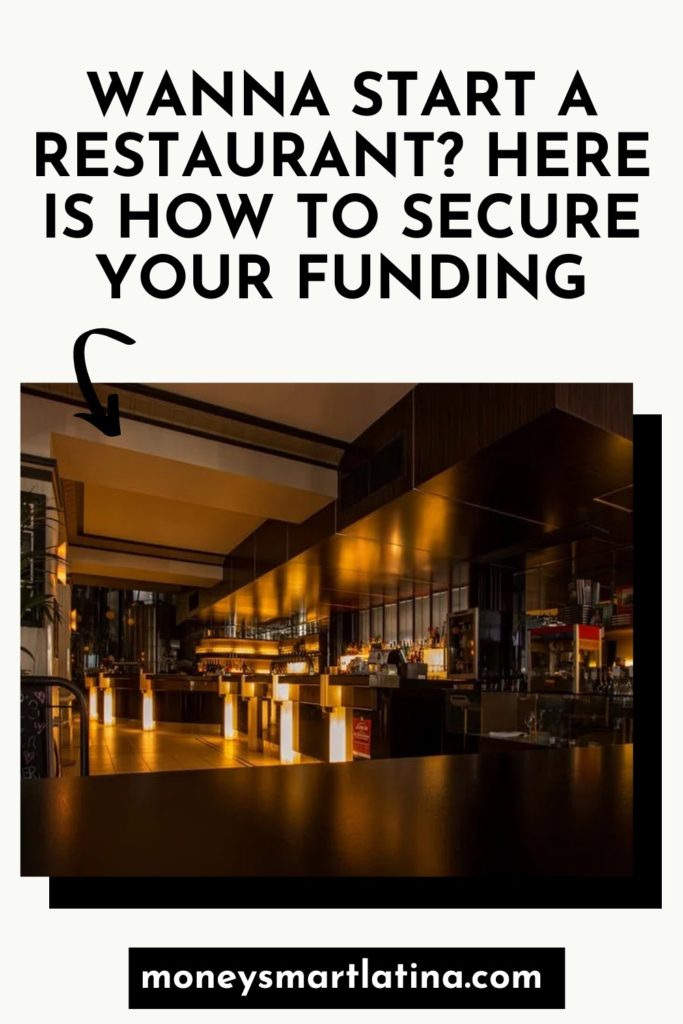
With the easing restrictions on travel and in-person events, businesses are starting to reopen and people are looking to find places to visit. This makes restaurants and other similar establishments an inviting business prospect.
However, as with any business endeavor, restaurants require financing. Whether you’re a first-time entrepreneur in your first restaurant or an experienced one looking to expand with a new location, capital is needed to put the gears into motion.

To help you secure the resources you need, here’s everything you need to know about financing your restaurant and ways to secure funding.
Understanding Different Financing Options for Restaurants
To start, it is important to specify restaurant financing as the funding raised, sourced externally, or borrowed from an external source intended for restaurants–whether it’s for setting up, renovating, maintaining, expanding, or supporting the business. By allowing the business owner quick access to capital, they can allocate resources toward meeting their short- and long-term goals.
For business owners, it helps to understand the different financing options available to them. Each of these options varies, each having its advantages and disadvantages that correspond to different requirements and financing needs. Here are some of the most common financing options and where can you use them.
Traditional Bank Loans
These are also called brick-and-mortar loans because they are generally intended for traditional businesses with physical establishments, such as restaurants. Since they are offered by established financial institutions, you can expect better security but at the cost of longer processing times and greater odds of being rejected. If you have the luxury of time on your side, and you’re looking for access to significant capital, then banks can offer the solution you need.
Of course, what makes it unique to brick-and-mortar businesses like restaurants is that these kinds of loans usually require you to offer collateral in return. This serves as the guarantee for the loan you will take out. It usually depends on your credit score, whether the business owner’s personal score or the business’ credit, but usually includes business assets like qualified equipment or the place of business if you own it.
For applicants with bad credit scores or insufficient credit history, it might be a little more difficult to get approved for traditional bank loans.
Alternative Restaurant Loans
Since traditional financial institutions are known for long approval times and high rejection rates, you can look into other alternatives. An increasingly popular option for small business owners is through online lending platforms. There are financing solution providers that can provide flexible and sustainable funding for restaurants.
In the digital space, brick-and-mortar loans are virtually non-existent under this option. You can get the funding you need without having to put up collaterals. Additionally, these are more convenient, making them excellent for hands-on restaurateurs who can’t leave their site to wait in line and apply in person.
Lastly, compared to their traditional counterparts, online lenders boast fast application processes and short approval times. Depending on the platform, you can get approved in as fast as 24 hours upon submitting your application.
Lines of Credit
If you’ve already set up your business and you see the need to regularly access additional funds for smaller applications like payroll or inventory, then a business line of credit might be the best option there is. This essentially acts like a credit card for your business. Upon approval, you gain access to a set amount of funds. You can then take as much as you want, with the set amount being your credit limit. Then, the borrowed amount is paid over a period of time. The good thing about it is once you’ve paid what you borrowed, you can borrow again and repeat this cycle as much as you need.
By having a line of credit available, you can cover your expenses should you experience shortages such as delayed payments or unexpected costs. Additionally, under this arrangement, only the amount you borrowed will be growing interest, with the rest of the funds staying as is. Also, as long as you return what you borrow, you can use the line indefinitely. Lenders who offer this service even allow you to increase your limit based on your history with them.
Crowdfunding
With everyone being connected one way or the other through the internet, some restaurants have raised the capital they needed through crowdfunding. Through this process, you raise the financing you need by soliciting small amounts of funds from a large number of people, or having the crowd fund your venture.
The easiest way to do this is through the use of crowdfunding sites such as Kickstarter, IndieGoGo, or GoFundMe. You set up an account, make your pitch on your profile, and wait for the offers to come in. There are different types of crowdfunding for you to choose from, each depending on what you’re offering in return for the funds you’ll receive
Reward crowdfunding
This is perhaps the most popular form of this financing method. Basically, people donate to your cause and receive something in return from your business. What’s great about it is that you get to decide the terms of crowdfunding, including the amount and the rewards they receive. It can be as simple as recognizing your donors on your website or social media accounts to discounts and complementary meals or beverages–the latter being the most common practice among restaurants.
It is important to note that it is not always about the straightforward exchange of donations for benefits. Restaurants with novel offerings or unique concepts usually gain larger support from the community.
Equity crowdfunding
Equity crowdfunding is essentially the opposite of traditionally looking for investors. Whereas you only need a few investors, each putting in significant resources for your company in exchange for an equity stake at your company. With crowdfunding, you distribute equity stakes or shares to the public. Essentially, in exchange for the public’s their financial support, you offer them a stake in your company.
This is usually more technical and is also time-based. Like a traditional funding round, there is a time frame for you to attract investors and convince them to join your cause. Once people have committed, a third-party entity (can be an online platform) will arrange the payment to the restaurant owner and will issue certificates of share or notes to the investors. No need to worry though, if you fail to meet your target financing amount or if you don’t attract enough investors, you can launch another funding round or request for an extension.
Debt crowdfunding
Also known as debt lending or peer-to-peer (P2P) lending, debt crowdfunding is the more flexible option if you’re still in the early stages of the business or if you’re in a position where you can’t commit something in immediate exchange for your supporters. Like the other crowdfunding strategies, this is also mostly done through online platforms.
In most P2P platforms, the business owner usually puts up their loan request on the platform, making it available for private and individual lenders to see your request. If they’re willing to provide the financing you need, they will contact you and both parties can negotiate the terms and specifications of the loan.
The advantage of debt crowdfunding over traditional loaning options is that private lenders generally skip the entire credit history investigation part. Usually, if they’re interested in the nature of your restaurant and your asking price is within their reach, they will contact you.


